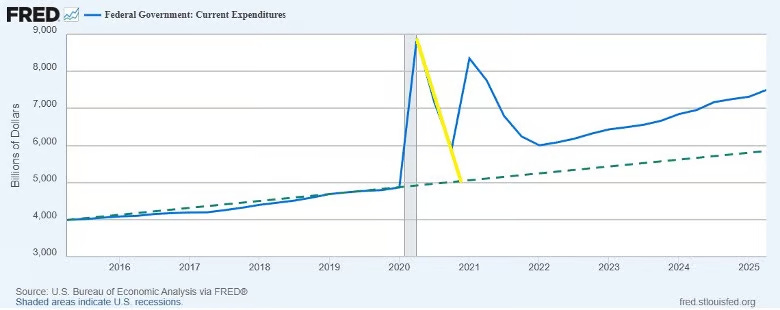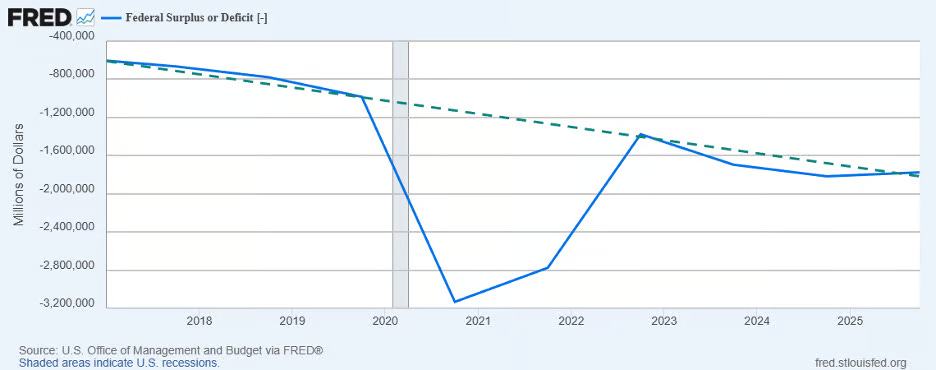Solving the Affordability Problem
Mamdani's urban socialism is not the answer.
Support for socialism among young Americans is increasing in reaction to the high cost of housing and other essentials, reports a new poll by The Heartland Institute’s Glenn C. Haskins Emerging Issues Center and Rasmussen Reports. The poll found even Trump supporters approve of Mamdani and want his agenda to go nationwide, the institute reports:
… New York City Mayor-elect Zohran Mamdani’s democratic socialist policies are widely supported by young Americans across the political spectrum, who overwhelmingly believe the cost of housing in America has reached a crisis level.
The survey found that even four-in-10 young Americans who voted for President Trump in 2024 have a favorable view [of] Mamdani and nearly half support Mamdani’s campaign policies at a national level.
A large group, 24 percent of those polled, said they are “not sure” what they think of Mamdani.
A major motivation for this rising support of socialism is concern about housing affordability:
Seventy-four percent of young Americans, including 70% of self-identified conservatives, believe the “cost of housing in America has reached a crisis level.” More than half (56%) of self-identified conservatives would support a congressional proposal to expand government housing and a nationwide rent freeze. In the 2028 election, 42% of Democrats said they would vote for a Republican presidential candidate if he or she offered the best plan to reduce housing costs while 45% of Republicans would support a Democratic presidential candidate if he or she offered the best plan to reduce the cost of housing.
Young self-identified conservatives and moderates support Mamdani’s plan for having government sell food to consumers and want it to be imposed nationwide:
A strong majority of likely young voters favor Mamdani’s idea for the government to address the rising cost of food by opening government-run grocery stores in every town in America. More than half of conservatives (53%) and moderates (53%) support government-run grocery stores in order to reduce the rising cost of food.
A majority of young voters now want a socialist to win the presidency in the next election, the study found:
More than half of young likely voters (51%) say they would like to see a democratic socialist win the White House in 2028, with those aged 18-24 most supportive at 57%. Surprisingly, this includes 42% of conservatives, 42% of moderates, and 66% of those making more than $200,000 per year. Among the few cohorts who would not support a democratic socialist presidential candidate in 2028 are those earning $100,000-$200,000 per year and those with a high school diploma/some college.
Heartland Institute Socialism Research Fellow Christopher Talgo refers to Mamdani’s politics as “socialism with a smile” and says the mayor-elect’s program is “resonating among young people who want to believe that these bumper sticker plans will actually address the affordability crisis that makes them feel like the American dream is no longer attainable.”
President Trump has joined the discussion rather late and inadequately, at least at first, with his main goal evidently to avoid being held responsible for high prices. After the November elections, Trump dismissed the affordability issue as a “con job,” telling reporters that his administration was already solving the problem. The Wall Street Journal reported:
The president said this past week that Republicans aren’t talking enough about his administration’s successes, and he dismissed questions on voters’ concerns regarding the economy. Most prices are on the downswing, he argued.
“Our energy costs are way down. Our groceries are way down. Everything is way down. And the press doesn’t report it,” Trump said. “So, I don’t want to hear about the affordability. Because right now, we’re much less.” …
In the Oval Office on Friday, Trump lashed out at reporters who pressed him on the cost of living. “We are much better than Biden,” he said. “We are the victors on affordability.”
Even Trump’s fellow Republicans were unconvinced and expressed dismay, the Journal reported:
Privately, Republicans said they are worried that Trump seems reluctant to empathize with voters’ economic pain. And some in the GOP have been raising red flags for weeks about Republicans’ vulnerabilities over the economy.
Rep. Marjorie Taylor Greene (R., Ga.) said in a recent interview with CNN, “Affordability is a problem.”
“I go to the grocery store myself. Grocery prices remain high. Energy prices are high,” she said. “My electricity bills are higher here in Washington, D.C., at my apartment, and they’re also higher at my house in Rome, Ga.—higher than they were a year ago.”
A few days later, last Wednesday night, Trump went on the Laura Ingraham show on Fox News to defend his record on inflation and affordability. ZeroHedge reports (bold and italics removed for ease in reading),
In Trump’s interview with Laura Ingraham, the president dismissed Democratic talking points on costs, noting only beef (with thriving ranchers) and coffee remain high. He plans to lower coffee tariffs to import more.
“We’re going to take care of all this stuff very quickly, very easily. It’s surgical. It’s beautiful to watch. But our costs are way lower now,” Trump said, adding that Walmart’s report of a Thanksgiving meal that is 25% cheaper than last year’s under the Biden-Harris regime serves as evidence of declining prices.
Trump told Ingraham:
And if you remember, when I first came in, the first two days I had a news conference. Eggs—they were hitting me with eggs. Eggs had quadrupled in price, and they’re screaming at me. … “Say[,] I just got here. I didn’t know about eggs.” And Brooke Rollins, our agricultural commissioner—did a[—]secretary—did [a] great job. And now eggs are what they were. We got eggs down.
He continued:
Much less expensive under Trump. And you will say, “I haven’t been here long. Nine months is not a long time.” But look at what we’ve done to energy. Look at the price of gasoline—going from $4.50, $2.50 or $2.70. It’s gonna be $2 gasoline. People want affordable? Well, the economy is my thing. We have the greatest economy in history.
On Friday, ZeroHedge reported further on the Trump administration’s strategy, dubbing it “Operation Affordability”—a name the president’s team should make sure to adopt:
President Trump’s Operation Affordability initiative kicked off this week, with the White House unveiling plans for tariff reductions and expanded trade ties with Latin American countries to boost imports of key food products. The goal: drive down supermarket prices ahead of the 2026 midterm election cycle to reverse darkening sentiment among low- and middle-income consumers.
Bloomberg reports that Trump is set to slash import levies on everyday staples, such as beef, bananas, and coffee, while moving ahead with new trade frameworks with Argentina, Guatemala, El Salvador, and Ecuador.
On Tuesday, President Trump and Treasury Secretary Scott Bessent both revealed on corporate media major moves by the administration to reduce costs for Americans when it comes to food. Trump called the effort “surgical and beautiful,” while Bessent said the effort will bring down prices “very quickly” and predicted that “people would start feeling better about the economy in the first half of 2026.”
Heading into the midterm elections, it seems likely that Trump will emphasize improvements in affordability, while pinning the blame for the problem on his hapless predecessor and the congressional Democrats. ZeroHedge reports,
… [Treasury Secretary Scott] Bessent is likely right that consumer sentiment will begin improving in the coming months, and this reversal is crucial. If these sentiment gauges fail to reverse, some folks may be drawn toward the newly transformed Democratic Party, now heavily influenced by Marxist-aligned DSA agenda, who aim to squander America’s inheritance by dangling “free stuff” to voters.
The way to ensure the Marxist revolution stops dead in its tracks is to tackle the affordability crisis, a lingering disaster left over from the Biden-Harris years.
The New York Times reported that updated “reciprocal tariff” rules will include carve-outs for beef and citrus, expanding on a prior executive order directing agencies to identify products not grown domestically for exemption.
New agreements with Guatemala, El Salvador, and Ecuador are reducing tariffs on products like bananas and coffee beans, which the U.S. imports but doesn’t produce domestically. These frameworks should be finalized by the end of the month.
Operation Affordability will target low- and middle-income households as well as younger voters, including Gen Z and millennials. The administration’s strategy is to improve sentiment and restore affordability, with the hope that these folks will vote “America First”, rather than embrace unhinged left dangling free bus rides and government-run grocery stores, in next year’s midterm elections.
The rapid price inflation from 2021 through mid-2023 and slower but still above-target pace of price increases since then is the real cause of the affordability crisis, which the media did not characterize as a nationwide problem until Trump entered office. The burst of inflation since 2021 has been a direct result of overspending in 2020 in reaction to the pandemic, which was exacerbated unnecessarily by further wild spending increases in 2021 and 2022 implemented by President Joe Biden and Democrat-only votes in Congress.
The pandemic effect was already receding and was heading back down to its recent historical trendline (yellow and dotted lines in the chart below) by the time Biden and the Democrat majorities took control of the government in January 2021 and threw diethyl ether on government spending:
Source: Federal Reserve Bank of St. Louis, with author-generated yellow markup line
The huge increase in the federal deficit began with the onset of the pandemic, briefly returned to the already-high Obama-Trump trendline in late 2022, and then moved slightly higher than the pre-pandemic trend and stayed there until mid-2025:
Source: Federal Reserve Bank of St. Louis
As the yellow line above indicates, the entire 2020 increase in federal spending should have been eliminated within two months of Biden taking office. Instead, Biden and the Democrat-controlled Congress increased spending radically.
That was what caused the inflation from which we are still suffering. The Federal Reserve flooded the economy with new money, to create instant liquidity and monetize the massive and unnecessary increase in federal spending in 2021 and 2022. The excess money pushed up prices of housing and other necessities, which have yet to come back down (and never will, if history is any guide):
The Unleash Prosperity Hotline summarized the inflation record of the past decade:
The chart below shows a clear chronological pattern:
Trump 1.0 – almost no inflation
Biden – runaway inflation
Trump 2.0 – low inflation
Media conclusion: Trump’s created an affordability crisis.
The affordability crisis is an outcome of a temporary but violent bout of inflation caused by excessive spending during and after the pandemic. The right response in January 2021 would have been to decrease government spending immediately to the prior trendline—or in fact well below that level, as President Warren G. Harding did in response to the severe depression of 1921 that President Woodrow Wilson left behind (which I wrote about in June 2020 in regard to that year’s spending increases). Harding’s swift, decisive, and absolutely correct action halted the depression and set off the Roaring ’20s economic boom.
Biden and the Democrats did the opposite, as you’ll recall without pleasure. The Federal Reserve has tried to slow the inflation by cutting the money supply significantly since mid-2022, yet inflation remains stuck near the 3 percent mark, a full percentage point above the Federal Reserve’s target of 2 percent (which is itself unjustifiably high).
Maybe it is just a coincidence that inflation is no longer responding to the Fed’s money-tightening actions, though I doubt it. The return to the pre-pandemic deficit-spending trendline instead of a much-needed reduction below that level is the much more likely culprit for the persistence of above-average inflation. Reckless increases call for wise decreases, not just a return to what was previously considered normal.
The only real solution to the inflation-inflicted affordability problem involves significant cuts in federal spending, which we are not going to get. Major reductions of federal regulation and increases in oil and gas drilling permission are also important, and those are in place with further reforms likely. They are not enough, however. Excessive federal spending is the real reason prices rose and will not return to their pre-pandemic levels.
Clearly, young voters in particular are unimpressed by number-heavy disputes about who is responsible for their affordability problems. That is not going to change. Given the appalling decline in the nation’s government-run, labor-union-dominated education system, it is hard to blame today’s young people for being impatient with numbers.
We can simplify it. What young people want today is what any sensible person wants: economic growth and improvements in their personal material well-being. Government overspending is the major obstacle to that, and reducing the size of that gargantuan impediment to human happiness is the only solution to the affordability problem.






